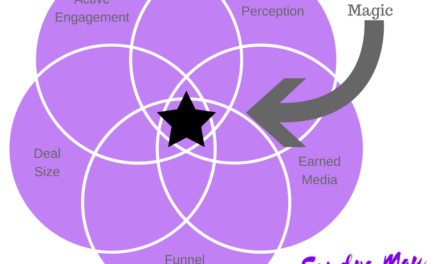Original content should be about delivering value to customers through mutually relevant and beneficial knowledge. This is not content curation or social media sharing. Companies that want to be thought leaders need to determine what “knowledge” will help their customers transform their business and take ownership of that knowledge area. Of course, the “knowledge” area that companies choose needs to be mutually beneficial to their own business objectives as well as those of their clients. Many organizations that choose to create knowledge rather than curate information rely on the creation of intellectual property (IP) through market research. This IP becomes the foundation of their thought leadership initiative and content strategy, in some cases for many years.
As a first step, companies need to pull together their best and brightest and have discussions regarding what “knowledge” their customers need from them or would benefit from. We are not talking about product or solution knowledge. We are recommending that organizations reach beyond their borders and consider their customer’s key strategic business issues, best practices or trans-formative opportunities.
As an example, a client believed that a knowledge area was critical to their business customers strategic business issues, could be trans-formative in nature and was focused on best practices. This client was in the technology space. Their preliminary research showed that leaders of all types of organizations around the world, from school districts to multinational corporations, were increasingly focused on a particular type of technology as an opportunity to drive new value. Most organizations would take this knowledge area and start writing content based on their solutions and opinions. I suggest that you take a broader approach. Take this knowledge area and conduct some research. This approach provides reliability and objectivity and is more powerful as a result.
The above client decided to commission a research company to conduct a broad global research study on the technology they and their competitors sold, The study focused on understanding the types of investments being made in these types of solutions, the best practices and the value received from those investments. These global research results provided a baseline on how the technology coupled with best practices drove business value for their clients and prospects. The study included participants from North America, Europe, India and Asia and gathered input from multiple industries and government and included various company sizes and job functions. The results were announced via a press release, a series of whitepapers, blog posts and speaking engagements.
The call to action within the original content pieces was not back to their website, but rather an invitation to participate in the research – which was ongoing. The research instrument was used to create an engaging and interactive on-line assessment which allowed prospective clients to educate themselves on how their technology projects and approach fared compared to their peers in the research database. In about 10 minutes they could receive real-time direction on where they needed to focus to ensure the best business value on their investment. As a result of this ongoing input into the research database, the company was able to get deep insight on their prospects so that their sales people could have a constructive and consultative discussion. As well, since the database filled with more respondents, additional original content could be developed on sub-sets of the data based on demographics such as role, company size, industry or region.
I have seen and experienced numerous ways this type of trans-formative knowledge and original content is leveraged to create a considerably different marketing and sale engagement than before this trans-formative knowledge was available.
What is your organizations knowledge area and how are you going to create original content and truly engage your clients?
Follow me @greefkes on most social sites.










